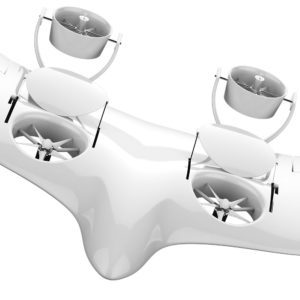
This past week, the United States Agency for International Development (USAID) released a list of finalists in the Combating Zika and Future Threats: A Grand Challenge for Development. Drone startup Vayu was among the winners that will share $30 million in funding to combat the deadly virus.
The USAID challenge called on global innovators to “generate cutting-edge approaches to fight the current Zika outbreak and to help strengthen the world’s ability to prevent, detect, and respond to future infectious disease outbreaks,” according to an agency press release.
The agency received 900 submissions and announced a preliminary list of 21 winners in August. Vayu will receive an undisclosed amount of funding to develop a UAV system to deliver and pick up medical supplies and lab samples from remote areas stricken by the deadly virus.
Zika is spread primarily by mosquitoes and has been linked to birth defects and other chronic ailments.
Vayu’s primary drone model is the Courier, a vertical-takeoff, fixed-wing hybrid. Once the drone begins takes off, twin rear-propulsion fans pivot from vertical to horizontal. The Courier sports a range of 60 km, a maximum payload of 2.2 kg and a maximum flight time of 60 minutes and can travel autonomously using a mobile app that displays a flight path, weather conditions and pre-flight checks.
The company has also partnered with Stony Brook University in another USAID-backed relief effort to deliver medicine and collect lab samples to and from rural villages in Madagascar. Earlier this year, the company launched a pilot program of long-range, autonomous flights from the villages to a nearby Stony Brook research facility
“Vayu’s accomplishment is as significant for the field of public health in developing countries, where limited access hinders healthcare as it is for the future of autonomous unmanned vehicles,” Vayu CEO Daniel Pepper said.
Drones will likely continue to mount a powerful offensive to battle the spread of dangerous diseases in developing nations. In India, a municipal government project deploys imaging drones to map regions known to harbor the dengue virus. Using the map, the Municipal Corporation of Guragon can isolate areas of potentially disease-ridden standing water to optimize pesticide-spraying missions.